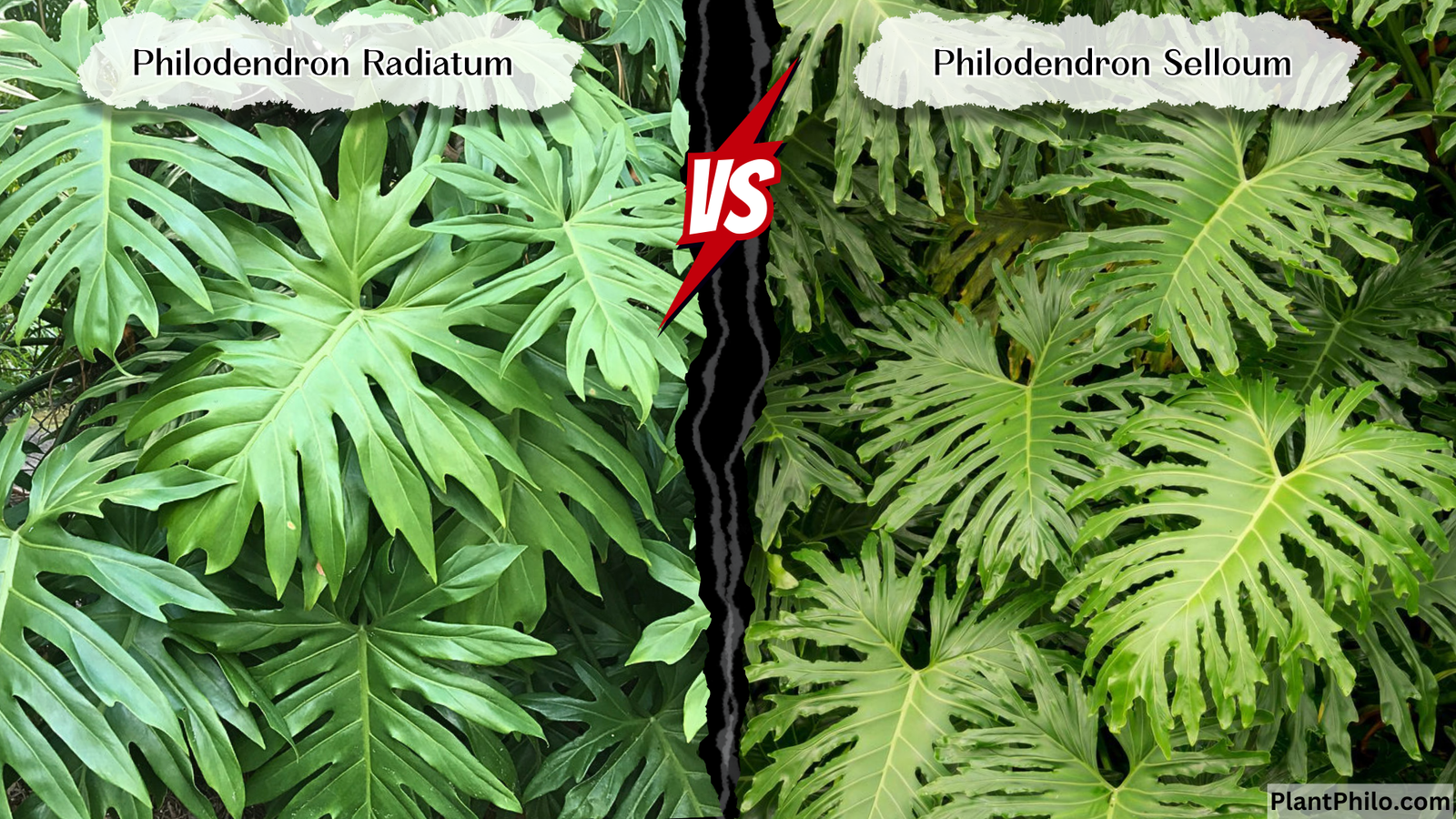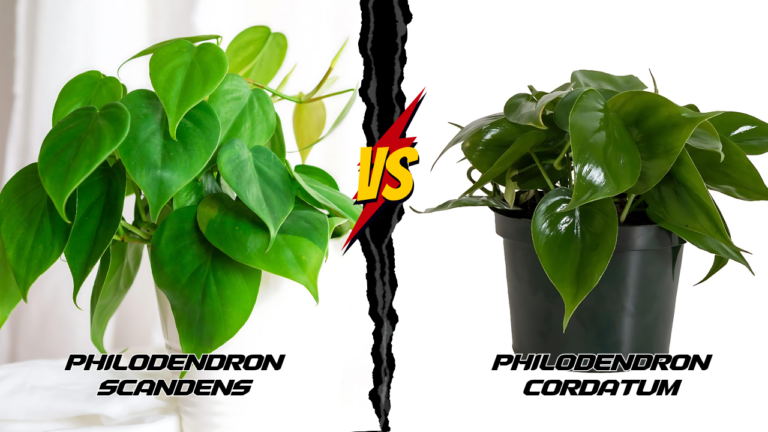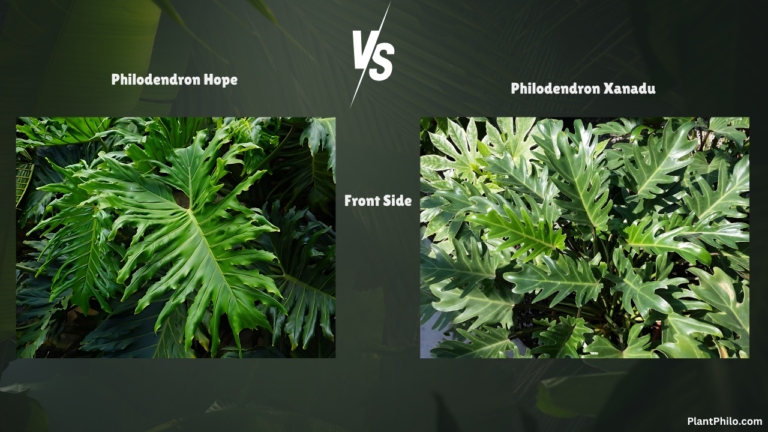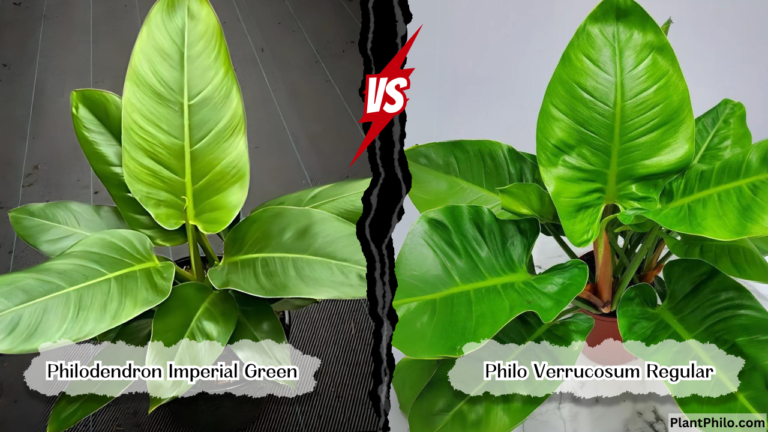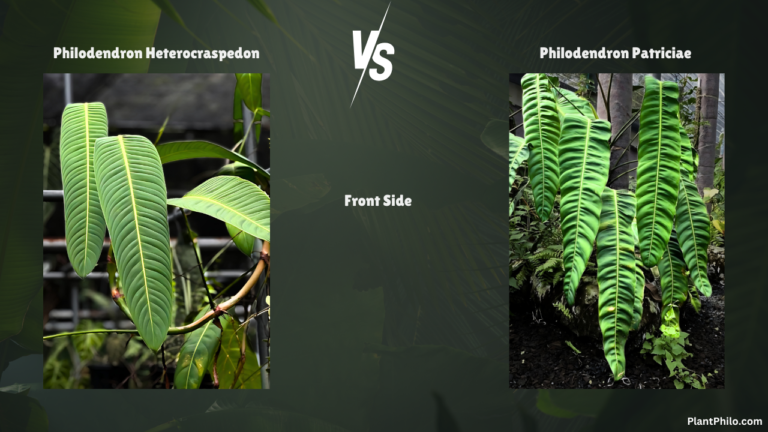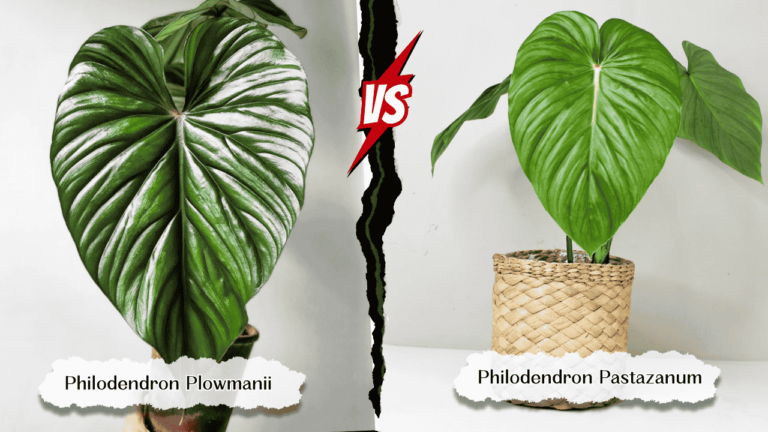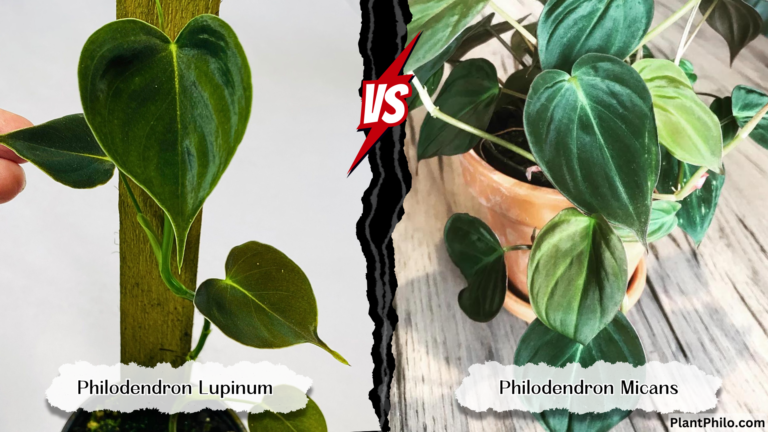Philo Radiatum vs. Selloum: Scratching Your Head Over These Two? I’ll Make it Crystal Clear
Philodendron Radiatum or Selloum? It’s like choosing between two majestic trees in a lush rainforest – both impressive but subtly distinct.
If you’re standing at the garden center, scratching your head over these two verdant behemoths, fear not! Let’s embark on a journey of botanical discovery, dissecting the nuances of these two Philodendron giants, ensuring you pick the perfect leafy companion for your green haven.
Comparison Table: Philodendron Radiatum vs. Selloum
| Feature | Philodendron Radiatum | Philodendron Selloum |
| Botanical Name | Philodendron radiatum | Thaumatophyllum bipinnatifidum (formerly Philodendron selloum) |
| Common Names | Lacy Tree Philodendron | Split-Leaf Philodendron, Horsehead Philodendron |
| Origin | Central America to South America | South America (Brazil, Bolivia, Argentina, Paraguay) |
| Growth Habit | Climbing or vining with support | Self-heading, upright, tree-like |
| Leaf Shape & Size | Deeply lobed, pinnatifid, up to 2-3 feet long | Deeply lobed, bipinnatifid, up to 3-5 feet long |
| Color | Deep green | Glossy green |
| Light Requirements | Bright, indirect light; tolerates some shade | Bright, indirect light; tolerates some shade |
| Watering Needs | Water when top 2-3 inches of soil are dry | Water when top 2-3 inches of soil are dry |
| Humidity | Appreciates higher humidity, but tolerates average levels | Appreciates higher humidity, but tolerates average levels |
| Fertilizing | Balanced liquid fertilizer monthly during growing season | Balanced liquid fertilizer monthly during growing season |
| Common Pests & Diseases | Mealybugs, scale, spider mites | Mealybugs, scale, spider mites |
| Propagation | Stem cuttings or air layering | Stem cuttings or offsets (pups) |
| Toxicity | Toxic to pets and humans if ingested | Toxic to pets and humans if ingested |
| Petiole | Long, slender, often reddish | Long, thick, often green |
| Stem | Thin, vining, develops aerial roots | Thick, trunk-like, forming a sturdy base |
| New Leaf Color | Lighter green, maturing to deep green | Lighter green, maturing to deep green |
| Air Purifying | Moderate air purifying qualities | Moderate air purifying qualities |
| Overall Difficulty | Moderately easy to care for | Easy to care for |
| Mature Size | Can reach 10-15 feet with support | Can reach 6-10 feet tall and wide |
In-Depth Comparison
Growth Habit: The Climber vs. The Standalone
The Radiatum, true to its vining nature, loves to climb and explore. Provide it with a moss pole or trellis, and watch it ascend to new heights, showcasing its intricate foliage like a living tapestry.
The Selloum, however, is a bit more grounded. It grows upright, forming a sturdy trunk and a magnificent crown of leaves reminiscent of a miniature palm tree.
Leaf Shape & Size: Lacy vs. Bold
Both plants boast deeply lobed leaves that add a touch of drama to any space. The Radiatum’s leaves are pinnatifid, meaning they’re divided into lobes that extend almost to the midrib. This creates a lacy, delicate appearance, almost like an intricate piece of lacework.
The Selloum’s leaves take it a step further, being bipinnatifid – the lobes themselves are further divided, resulting in a bolder, more textured look.
Color
Both plants offer a feast for the eyes with their lush green foliage. The Radiatum showcases a deep, rich green that evokes a sense of tranquility and depth. The Selloum, in contrast, has a glossier sheen, reflecting light and adding a touch of vibrancy to its surroundings.
Light & Water: Similar Needs, Different Reactions
Both the Radiatum and Selloum thrive in bright, indirect light and appreciate a good soak when the top few inches of soil dry out.
However, the Radiatum, with its thinner leaves, might show signs of stress (like browning tips) a bit quicker if underwatered or exposed to harsh sunlight. The Selloum, with its thicker leaves and sturdy build, is a bit more forgiving.
Humidity
Both plants hail from tropical regions, so they naturally enjoy a humid environment. Think of it as their way of staying connected to their roots.
While they can tolerate average household humidity, they’ll reward you with lusher growth and healthier leaves if you can bump up the moisture levels. Misting, pebble trays, or a humidifier can all do the trick.
Fertilizing & Pests
Both plants benefit from a monthly dose of balanced liquid fertilizer during their growing season (spring and summer). They’re also susceptible to the same common houseplant pests, like mealybugs, scale, and spider mites. So, keep a watchful eye and address any infestations promptly.
Propagation: Branching Out
Both plants can be propagated but with slightly different methods. The Radiatum readily produces aerial roots, making it a prime candidate for air layering.
You can also propagate it from stem cuttings. The Selloum, on the other hand, often produces offsets or “pups” at its base, which can be separated and potted up. Stem cuttings also work for the Selloum, but they might be a bit slower to root.
Toxicity & Other Tidbits
Both the Radiatum and Selloum contain calcium oxalate crystals, so keep them away from pets and curious children. The Radiatum’s petioles (leaf stalks) are often reddish, adding a subtle pop of color. The Selloum’s stem thickens and develops a trunk-like appearance as it matures, adding to its tree-like stature.
Overall Difficulty & Mature Size: Planning Ahead
Both plants are relatively easy to care for, but the Selloum might have a slight edge for beginners due to its more forgiving nature.
However, keep in mind that both plants can grow quite large. The Radiatum can reach 10-15 feet with support, while the Selloum can span 6-10 feet tall and wide. So, make sure you have enough space to accommodate these green giants as they mature.
FAQs: Clearing the Air
Which plant is better for small spaces?
The Philodendron Radiatum can be trained to climb vertically, taking up less floor space.
Which plant is faster growing?
The Philodendron Selloum generally grows faster than the Radiatum.
Can I prune these plants?
Yes, you can prune both to manage their size and shape.
Do these plants flower?
They rarely flower indoors.
What type of soil is best?
A well-draining potting mix rich in organic matter.
How often should I repot?
Repot every 2-3 years or when roots become overcrowded.
Can I grow them outdoors?
Yes, in warm climates, but it provides protection from harsh sunlight.
Which plant is more expensive?
The Philodendron Radiatum is generally rarer and can be more expensive.
Why are the leaves on my plant turning yellow?
This could indicate overwatering, underwatering or nutrient deficiencies.
How can I encourage my Radiatum to climb?
Provide it with a moss pole or trellis and gently guide its vines upwards.
Wrapping Up,
Whether you choose the intricate elegance of the Philodendron Radiatum or the bold stature of the Selloum, you’re inviting a touch of the tropics into your home. Remember, both plants are living beings with their own unique personalities.
Observe them, listen to their subtle cues, and adapt your care accordingly. With a little love and attention, these leafy giants will thrive and reward you with years of verdant beauty. So, go ahead, embrace the green and let your chosen Philodendron reign supreme in your indoor jungle!

